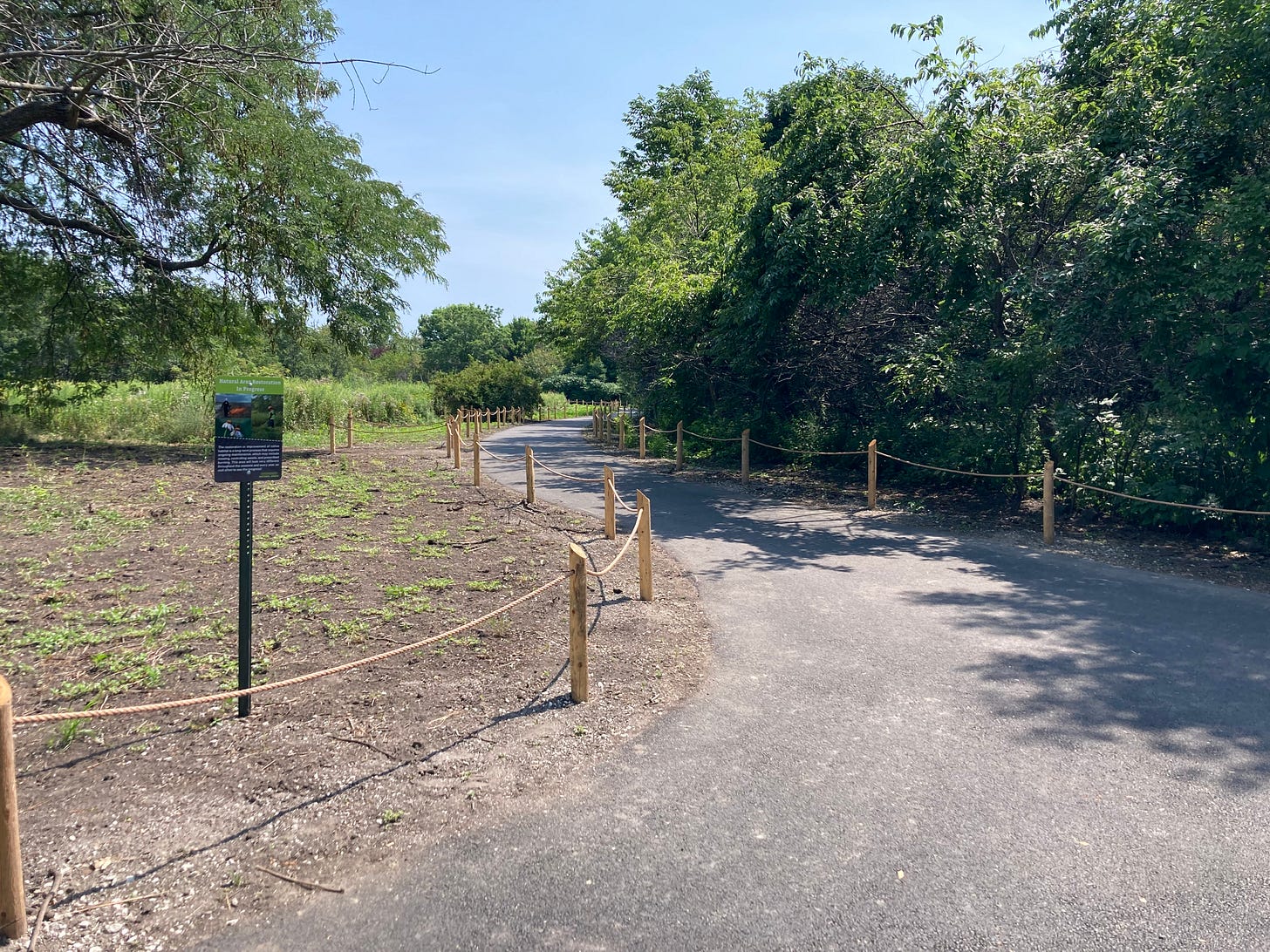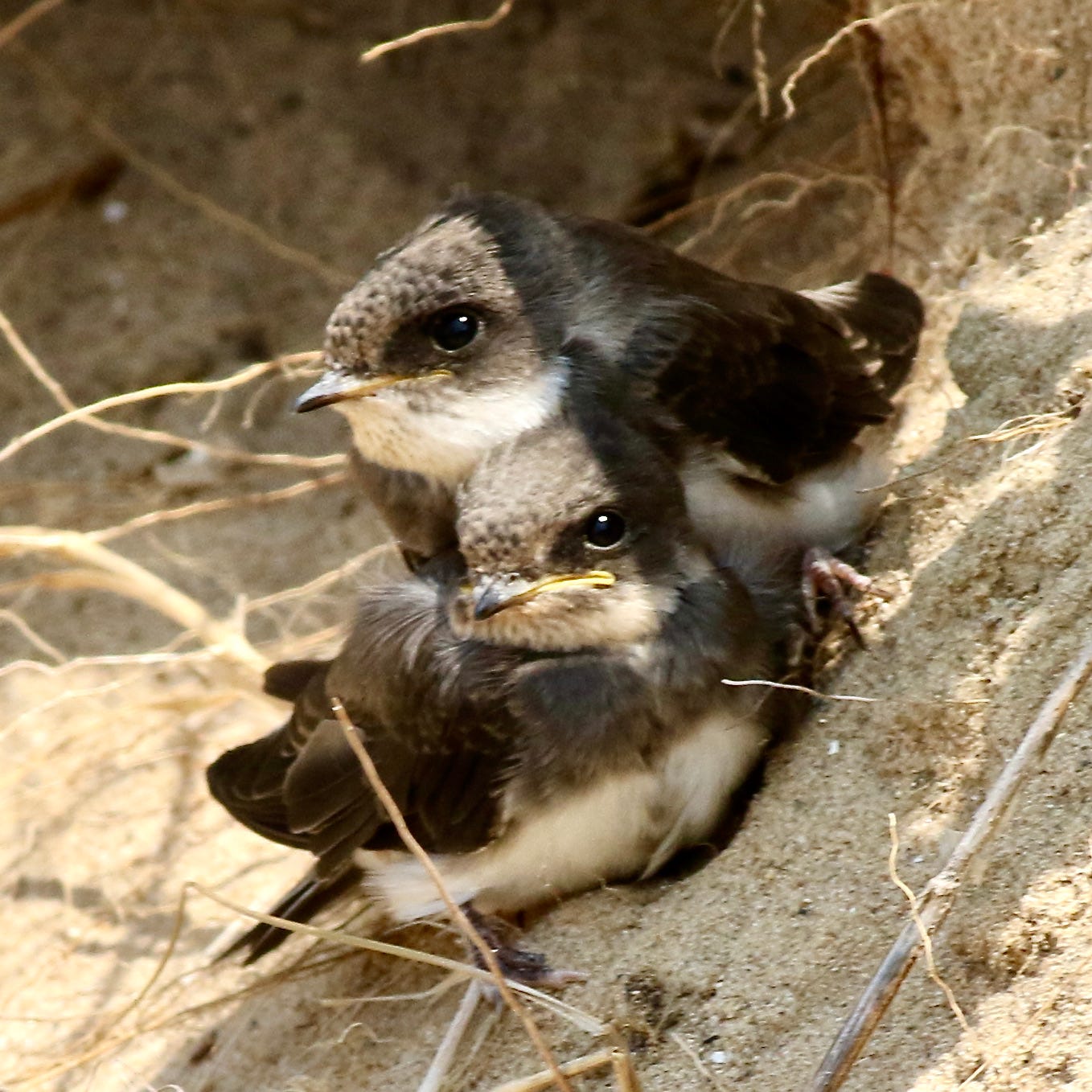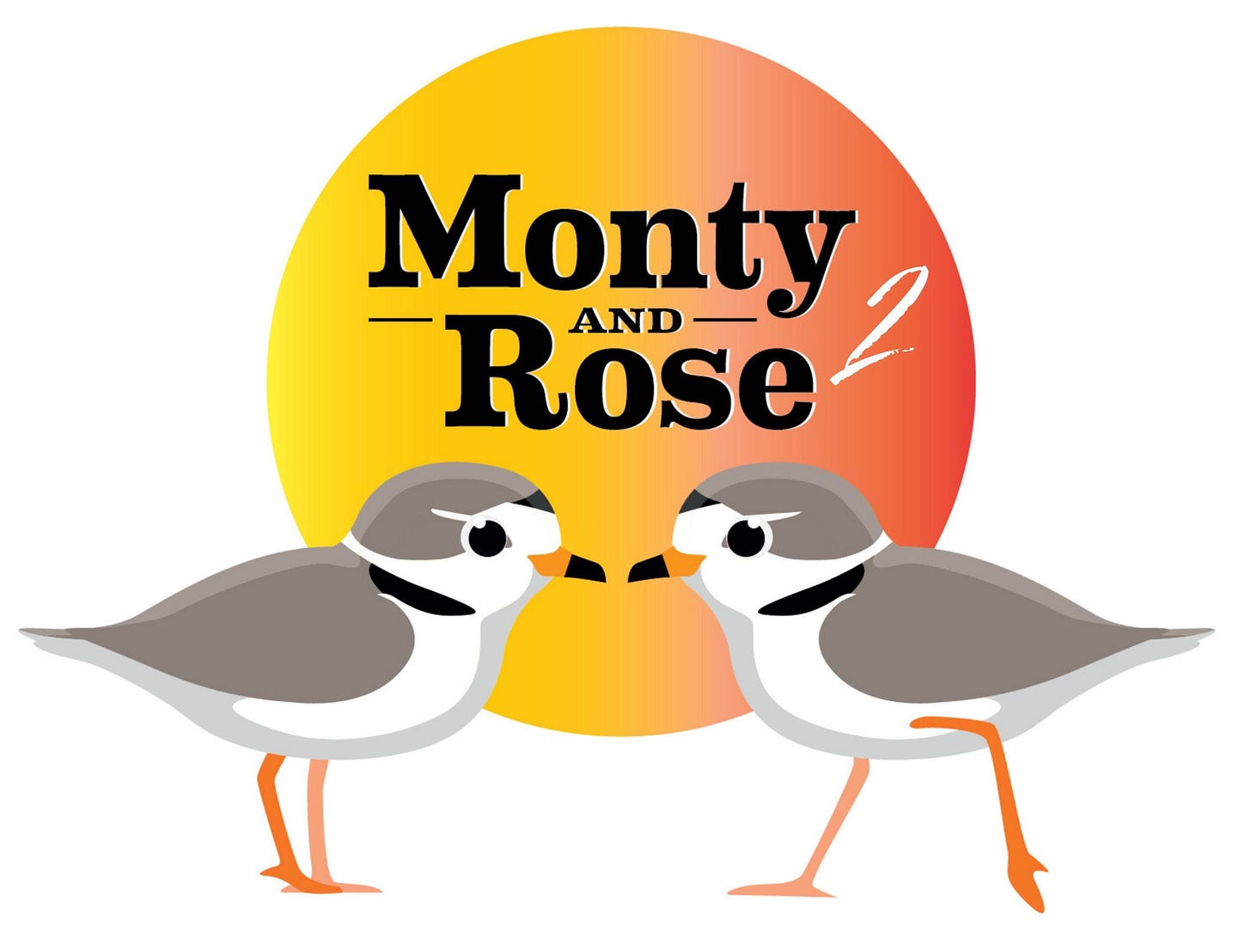A look at Montrose Point trail improvements and what's next
Accessible path provides greater access, management plan means more habitat for birds.
Montrose Point Bird Sanctuary is something of an accidental nature preserve. It’s riddled with scattershot trails that spider around its 15 acres. Only a small portion of vegetation could be deemed high-quality, and much of it dates to the plantings around a military barracks decades ago. Even finding the place can be a challenge. There are about six different entrances, and they aren’t very well-marked.
But Montrose Point Bird Sanctuary is the No. 1 birding locale in terms of species and checklists in Illinois. In my opinion, it’s a top-five birding site in eastern North America. It’s overdue for some sprucing up, especially if it means more people can enjoy the space.
The sanctuary was closed for construction of a wheelchair-accessible path from June 16 through Aug. 1. The announcement of the project and the closure wasn’t without conflict. The work surprised many and disappointed some, though as I’ve learned there is an extensive Montrose Point Master Plan that has been in the works since at least 2015. The new asphalt path and signage are just small portions of the plan, which included the development of the popular Butterfly Meadow area on the western side in 2017. The next phase includes an artificial wetland, including a prairie stream, and viewing area that the Park District still hopes to build. This is the area Montrose regulars know now as “the water feature.” It will take funding, though, and that means raising dollars through grants. The Park District, like many city agencies, doesn’t have taxpayer money of its own to do much other than maintain existing infrastructure.
So the removal of vegetation to make way for the path alarmed some folks; there’s understandable fear that the asphalt will lead to a parade of bicycles (though the fenced entry ways may hinder that). There’s also concern that the work disturbed this summer’s resident birds.
Yet, one can imagine vegetation returning quickly, and indeed stewards already are focused on that. And the benefits to people with disabilities and people with limited mobility are many.
Alycia Kluenenberg along with Mike Roche serve as Volunteer Site Stewards for Montrose Point Bird Sanctuary (as a reminder, the bird sanctuary is the mostly wooded area of Montrose Point that is home to the famed Magic Hedge).
“I understand it’s been stressful for people about putting asphalt down,” Kluenenberg says, “But having seen it and walked through it…my mom is in a wheelchair. I think about if she did visit, I would be really excited to take her there and for her to go through the trails. I think about that perspective a lot because it’s a personal perspective.”
Volunteers on a work day a couple weeks ago included people in wheelchairs for the first time. Some of the new vegetation will replace what was taken out for the trail. That means the new trails are providing people with access to recreation—as well as to much-needed volunteering. It’s a win-win.
“For a lot of people, this is their backyard,” Kluenenberg says, “not just the natural areas but the whole park. The Park District is working on getting volunteers with disabilities to help. That is exciting and exactly what we want to do at this spot.”
Kluenenberg is excited about the removal of the random pathways known as desire trails. There are now ropes and wooden posts that more clearly delineate the formal paths at the sanctuary.
“It’s going to be more habitat for the birds and an opportunity to get some nice plants in there, too,” says Kluenenberg, whose day job is as an environmental consultant. “It will make it an overall better experience. In certain areas, you’ll forget you’re in the city and get more habitat. It will be really nice.”
If you go: Take Montrose Avenue east from Lake Shore Drive until you see the Park Bait Shop. Make a right there, onto Montrose Harbor Drive. Go about 500 feet and the sanctuary will be on your left, on the north side of Montrose Harbor Drive. If you drive, you’ll need to pay for street parking.
There really is an enormous amount of information in the Montrose Point Master Plan, and if you have the time and care about Montrose I suggest checking it out.
Last week I wrote about the new habitat at Montrose Beach Dunes and the Bank Swallow colony there. The 100 or so nests there make up probably the only Bank Swallow colony in the City of Chicago. TWiB reader Lorra Rudman emailed me this awesome photo of a pair of juvenile Bank Swallows at Montrose. These aren’t easy birds to photograph. They flit in and out of their burrows quickly.
You can clearly see a clue here for Bank Swallow identification: the bands that they have across their breasts. This distinguishes them from Rough-winged Swallows and Tree Swallows. How to remember this? Think of “band” and “bank”…they’re just one letter apart, and you’ll never forget this field mark again.
Tickets for “Monty and Rose 2: The World of Monty and Rose”
Join us for the premiere of my second documentary about Monty and Rose! This is a new film, a new story line with new characters and a lot of new footage of our favorite plovers! Those featured in the hour-long film include “Plover Mother” Tamima Itani of Illinois Ornithological Society, American Birding Association's Greg Neise, actor/artist Tony Fitzpatrick, Chicago Tribune reporter Morgan Greene, Chicago Ornithological Society President Edward Warden, Montrose Dunes Site Steward Leslie Borns, longtime Chicago birder and guide Geoff Williamson and many more. Buy tickets for the Sept. 4 and Sept. 6 showings by clicking here.
This TWiB post was emailed to the free list as well as paid subscribers. You can ensure you never miss a post by becoming a paid subscriber!







